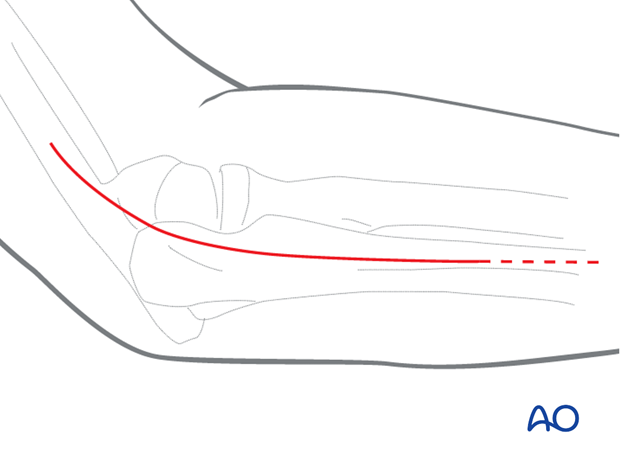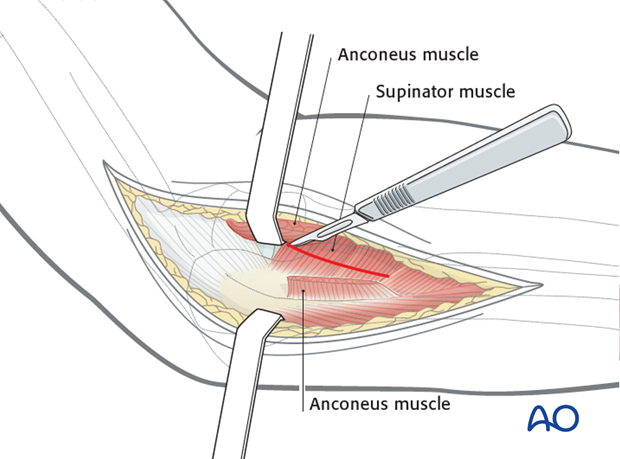Speed and Boyd’s approach to the forearm shaft
1. Introduction
This approach gives good exposure for fractures that include proximal ulnar shaft fractures and disorders of the radial head. It can be used for Monteggia injuries with persistent displacement of the radial head after anatomical reduction and fixation of the ulnar fracture. Its advantage is that both lesions (ulnar fracture and radial head dislocation) can be accessed via a single approach.
In Monteggia injuries, the decision-making is based on the direction of the dislocation of the radial head. Posterior dislocation is addressed via the Speed and Boyd approach and anterior dislocation via the lateral approach.
2. Skin incision
The skin incision begins proximal to the elbow and lateral to the triceps tendon. It curves distally over the lateral aspect of the tip of the olecranon, and continues along the subcutaneous border of the ulna.
Note: This approach is useful to reach both bones in their proximal portions via a single incision. However, there is an increased risk of synostosis (as in any combined approach to both the radius and ulna).

3. Dissection
Incise the deep fascia in line with the incision to approach the lateral margin of the ulna between the anconeus insertion and the flexor carpi ulnaris.

4. Expose the radial head
The anconeus muscle is reflected anteriorly/laterally after incising its ulnar insertion.
The next layer is the supinator muscle that is detached near its ulnar origin.

The anconeus and supinator muscles are then freed from the posterior aspect of the interosseous membrane, carefully protecting the posterior interosseous nerve, which is within the substance of the supinator muscle. By retracting these muscles, the posterior joint capsule over the radial head is exposed, allowing the repair of the posterior capsule and/or annular ligament.














